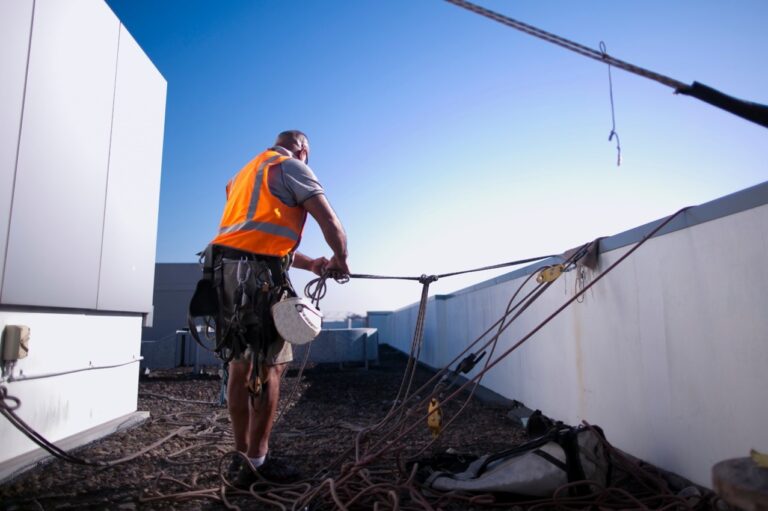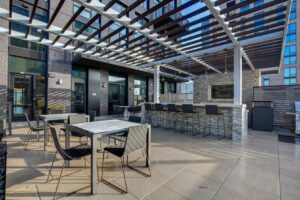Dear friend and fellow property owner,
When it comes to protecting your investment, your commercial flat roof plays a crucial role in safeguarding your building and its occupants from the elements. So, in the midst of storm season, you need to take proactive steps to secure your roof before disaster strikes. This means thoroughly inspecting for signs of damage both before and after a storm.
At Omni Roofing, we know how important it is to maintain a watertight roof, and we are here to help in every way we can when it comes to your commercial roof care and maintenance.
In today’s blog, we’ll talk about how you can secure your commercial flat roof before a storm and check for signs of damage afterward.
Securing Your Commercial Flat Roof Before a Storm:
- Inspect and Clear Drains and Gutters: Before a storm hits, take the time to inspect and clear your roof drains and gutters of any debris that could impede water flow. Clogged drains and gutters can lead to ponding water on your roof, increasing the risk of leaks and structural damage. By ensuring proper drainage, you can minimize the potential for water infiltration during heavy rainstorms.
- Check Roof Flashing and Sealants: Roof flashing and sealants play a critical role in keeping your commercial flat roof watertight. Inspect these areas for signs of wear, cracks, or gaps that could allow water to seep into your building. Promptly repair or replace any damaged flashing or sealants to maintain the integrity of your roof’s waterproofing system.
- Inspect Roof Membrane and Joints: The roof membrane is the first line of defense against water intrusion on a commercial flat roof. Inspect the membrane and its joints for signs of damage, such as tears, punctures, or separation. Address any issues promptly to prevent water from penetrating your roof and causing interior damage to your building.
- Secure Loose Equipment and Debris: High winds associated with storms can turn loose equipment and debris into dangerous projectiles that can damage your roof and surrounding property. Secure loose equipment and remove debris from your roof to minimize the risk of damage during a storm. Additionally, consider installing protective barriers or anchor points to prevent equipment from becoming airborne in high winds.
Inspecting Your Commercial Flat Roof After a Storm:
- Conduct a Visual Inspection: After the storm has passed, conduct a visual inspection of your commercial flat roof for any signs of damage. Look for evidence of ponding water, torn or displaced membrane, damaged flashing, or debris accumulation. Take note of any areas that may need further inspection or repair.
- Check Interior Spaces for Water Intrusion: Water infiltration may not always be visible from the exterior of your building. Check interior spaces, such as ceilings, walls, and attic spaces, for signs of water intrusion, such as water stains, mold, or mildew. Address any signs of water damage promptly to prevent further deterioration of your building’s interior.
- Schedule a Professional Inspection: While a visual inspection can uncover obvious signs of damage, consider scheduling a professional inspection with Omni Roofing to assess the full extent of any storm-related damage. Our experienced roofing professionals have the knowledge and expertise to identify hidden issues and recommend appropriate repairs to restore your roof to optimal condition.
If you need assistance with securing your commercial flat roof before a storm or inspecting it for signs of damage afterward, don’t hesitate to reach out to us at 817-290-3115. We’re here to help you weather the storm and keep your commercial property safe and secure for years to come.





